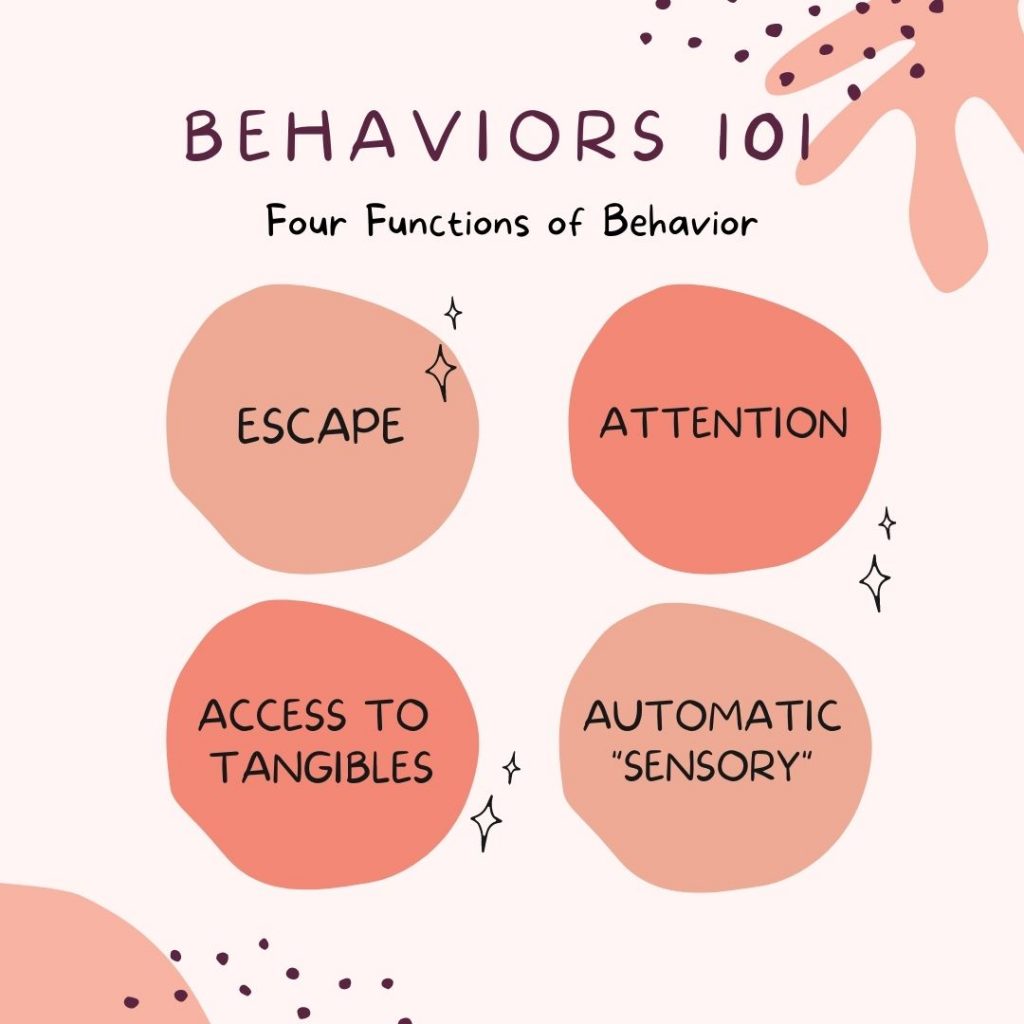Let’s set the scene: Your child sees someone playing with his favorite toy. He becomes very upset, throws himself on the floor, and lets the flood gates open. He starts to cry and becomes inconsolable. Does this sound familiar? Let’s take a look at the different number of reasons why children exhibit behaviors and what they could mean.
Behaviors come in many forms and are often a way for a child to communicate some type of need, whether that be communication, attention, emotional, or even biological.
All behaviors serve at least one of these functions, and you may sometimes find that a behavior can serve multiple functions at one time.
Behaviors can be observed by a certified behavior analyst (BCBA) to determine if there are any common denominators and to figure out how best to help the child.
Let’s break down the functions for a better understanding.
~ Escape : wanting an aversive event removed. This could present itself as escaping a demanding task, a difficult situation, experienced pain, or another unpleasant situation.
Examples : loud noises, math homework, worksheets, sharing toys, peer/social interactions
~ Attention : engaging in a behavior in order to gain a social interaction from peers or adults. Attention, even in the form of reprimands and yelling, can often serve as reinforcement for behaviors.
Examples: a child standing on the table and stomping his feet in order to gain attention from those around him or a child acting as the “class clown” to gain attention from peers
~ Access to Tangibles : Desired items or activities that an individual wants could result in a child becoming behavioral in order to gain access to that item.
Examples: grabbing a toy from another child, crying when the iPad is unavailable, being denied access to a sweet treat
~ Automatic “sensory”: behaviors that occur “automatically” for sensory input and experiences that feel good or are relieving.
Examples: jumping, spinning, hand flapping, scripting, tapping pen, bouncing leg
Analyzing the function of the behavior helps the BCBA determine why a behavior is happening. Once the function is identified, the BCBA can determine if an intervention is required. At the end of the day, kids are kids and not all behaviors require an intervention. However, if you do have questions regarding your child’s behavior, contact us and we will be more than happy to discuss your concerns with you!






